Greyhound Eye Disease – Pannus
Pannus is a disorder that affects the eye of the greyhound, and will eventually lead to blindness if it’s not managed.
It is not painful in its early stages, causes no discharge from the eye, and may be hard to see unless you look closely at your greyhound’s eyes in a good light. If it is not diagnosed or treated, the disease will slowly cover the clear part of the eye (the ‘cornea’) until the dog can no longer see.
Pannus is seen most commonly in German Shepherd’s, but is also found in Collies, Poodles, Dachshunds and Greyhounds. There is thought to be a significant genetic inheritance, with certain families and lines within a breed more severely affected, but environmental factors also play a part in the development of the disease.
What does it look like?
Pannus symptoms generally start to appear when the dog reaches 2-5 years of age. In the beginning you may only notice that the edge of the cornea seems more pigmented (coloured) than before – kind of like ‘freckles’ developing near the edge of the eye – or there may be a hazy/greyish colour to the edge of the clear part of the eye. Generally the disease will occur in both eyes, starting at about the same time, but the lesions do not necessarily look the same.
As the disease progresses, Pannus lesions may simply look like brown pigment ‘growing’ onto the surface of the eye, or it may appear more inflamed with a ‘greyish-pink’ colour (which is the eye’s version of scar tissue). If you look closely, you might even see small blood vessels growing onto the eye surface. The colour change to the clear part of the eye starts at the outside edges and spreads inwards until the entire eye surface is covered, leaving no clear window for light to enter the eye – making the dog blind.
What causes it?
Pannus is thought to be an auto-immune disease. This means the body actually starts to attack itself. The genetic predisposition to develop pannus is inherited – so it tends to affect certain breeds and certain families within these breeds more than others.
The other factor thought to contribute to pannus is exposure to Ultra-Violet (UV) light. This exposure to UV light is thought to trigger the start of the reaction, or to make the reaction worse, so it is important to keep affected dogs out of bright light, especially in the summer months when the UV level is high. Even if exposure to UV light is not the cause of the disease, the rate of progression increases with exposure to high levels of UV light (from sun light, or reflected light from water).
Can it be treated?
Once the disease has started, there is no ‘cure’ that completely eliminates pannus. All treatments are directed at slowing the progression of the pigmented lesions and to prevent flare-ups. The most commonly used treatment is cortisone eye drops, which are administered daily. The cortisone slows the immune reaction that causes the pigment, and hence slows the progression of the disease. Cortisone may also be combined with cyclosporine drops which also help control the symptoms.
What should I do if I suspect one of my greyhounds may be affected by pannus?
The first thing to do is to consult your veterinarian. They will be able to do an eye examination, and discuss the disease with you. They can also refer you to a veterinary ophthalmologist (eye specialist for dogs) who can give more specific advice and recommend treatments for more severe cases. Getting to the disease early gives the best chance of treatment, so don’t hesitate – take the greyhound to the vet for a check up.
Meet our dogs ready for adoption
All greyhounds adopted from GAP are de-sexed, vaccinated, microchipped, wormed and health checked.
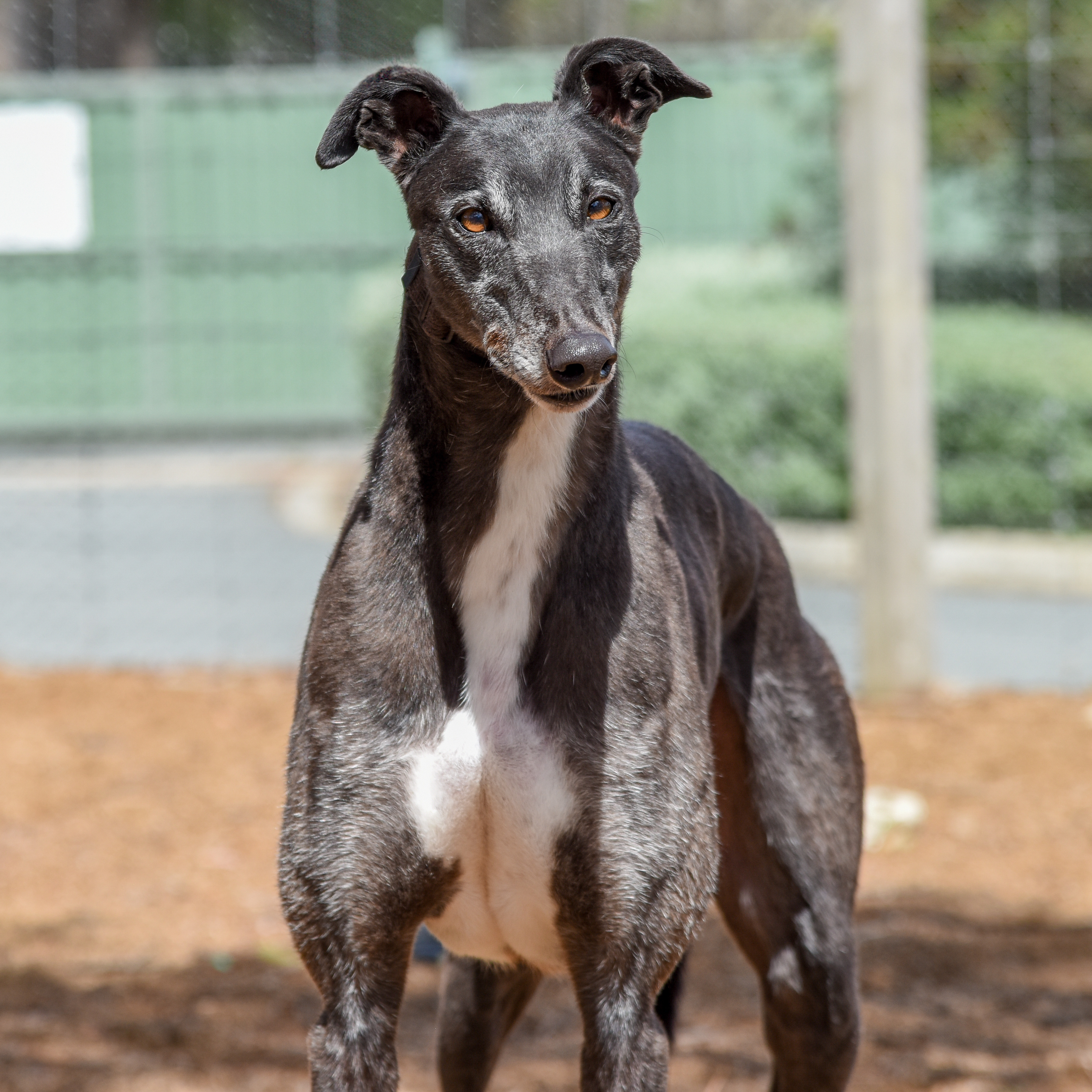
CJ

Quagga
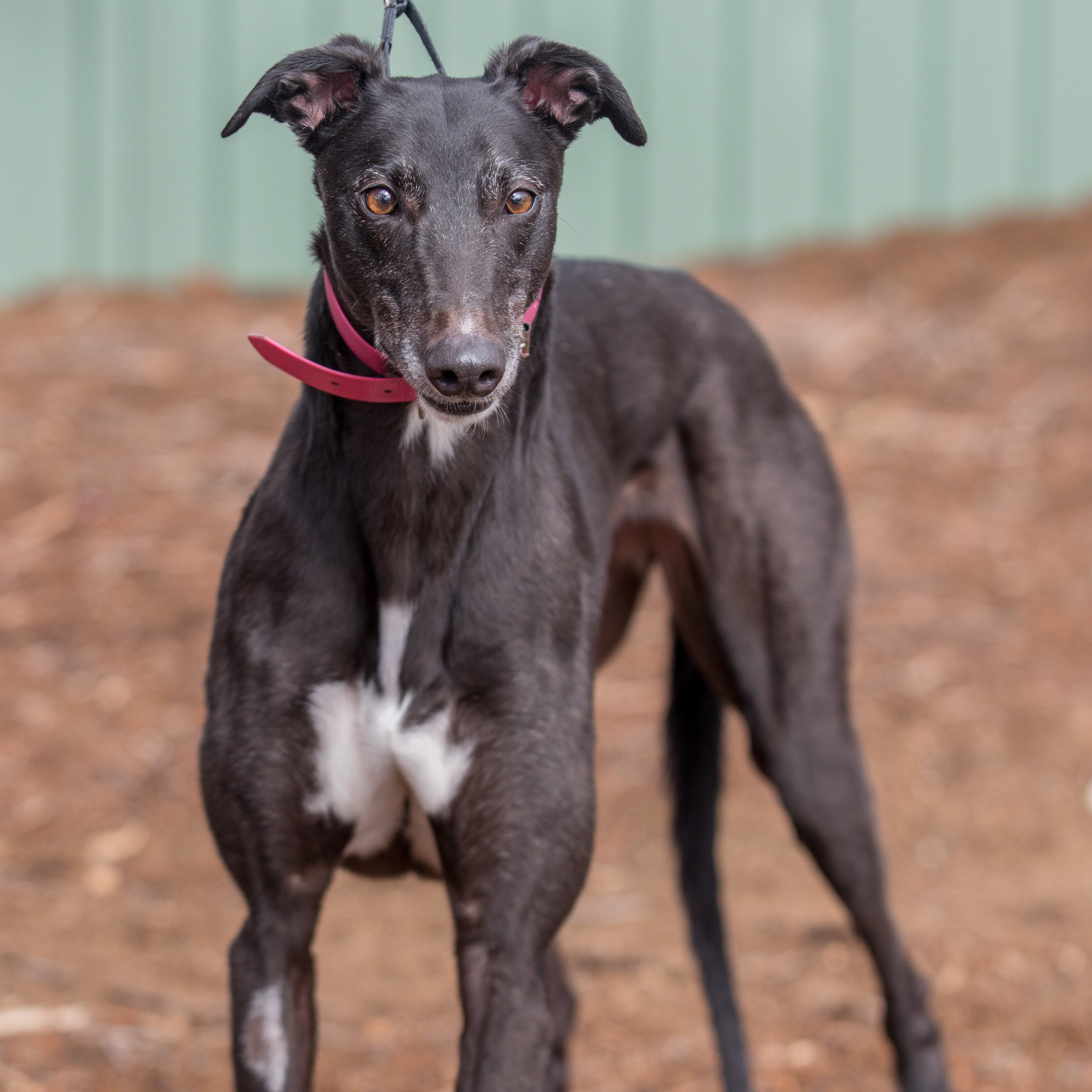
Echo ARP
Can you hear an Echo? Its saying “Hey you! I’m ready to be adopted, adopted, adopted…..”. Ok enough with the cheesy jokes. But seriously, this girl is a super sweet, personable, quiet, polite and a little sprinkle of puppy. She can be a little shy in new environments, but she soon relaxes and shows her charm. We think she may suit living in a home with children 10 and over and possibly with a play buddy of any size as long as they are willing to play with a greyhound. We also think she may suit living with full timeworkers.
This dog is part of our Assisted Rehoming Program (ARP). We have behavioural and health assessed this lovely dog, and they will remain with their racing owners until they find an adoptive home, at which point they are brought back into GAP. This means that should you be interested in adopting this dog, we are bringing the dog into GAP on the understanding that you will be adopting this particular dog, and not other dogs currently in our care.
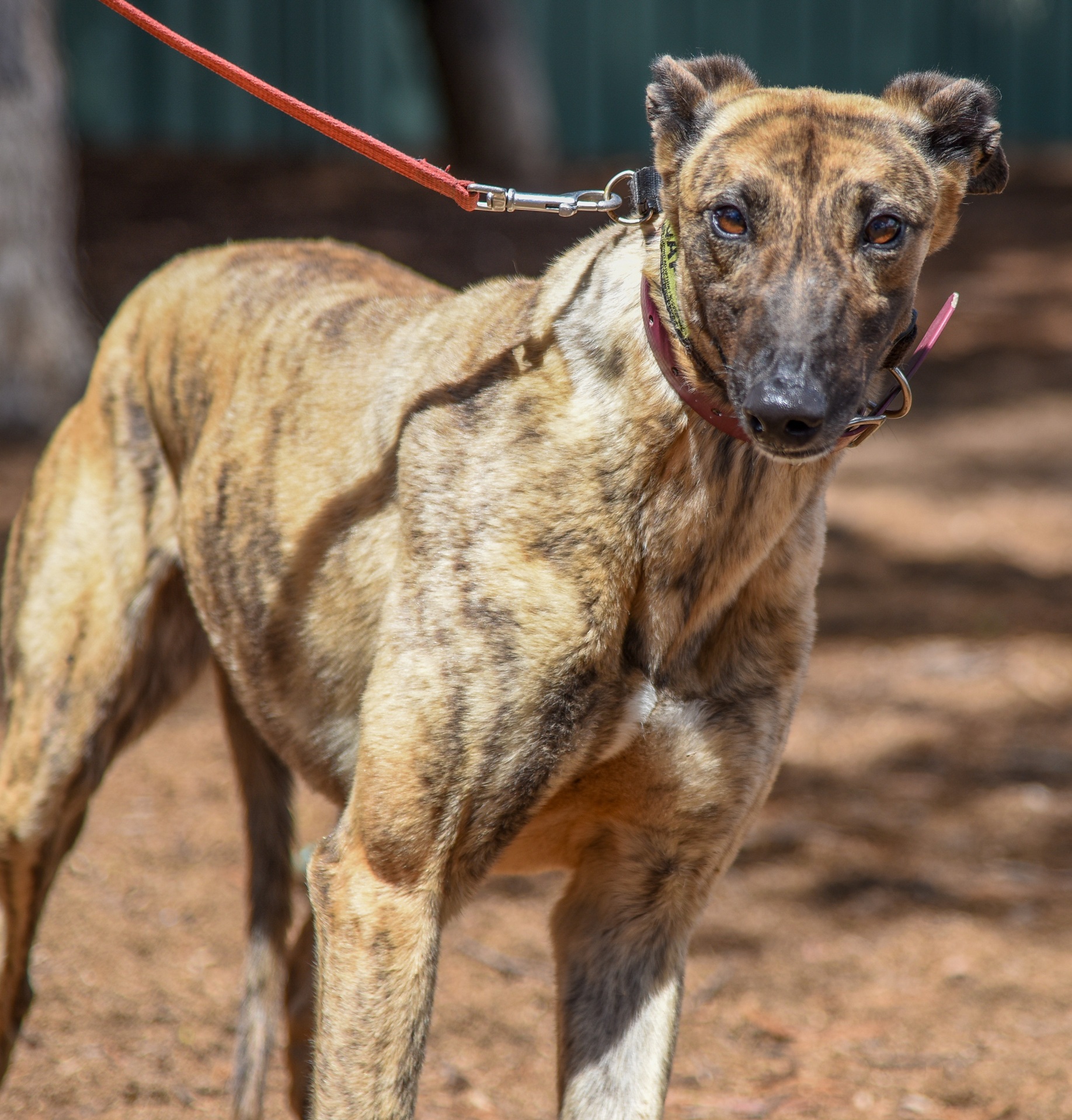
Izzy ARP
How pretty is this little girl! Izzy is a sweet and personable girl that can be a little unsure and shy in new environments. She may take sometime coming out of her shell in her new home but once she is apart of the family we think she will thrive. A home with children 10 and over and respectful of boundaries may be ok and another male dog of any size. A place with an outdoor area for her to relax in will be ideal for her as she comes out of her shell. This lovely dog is not suitable for a home with cats.
This dog is part of our Assisted Rehoming Program (ARP). We have behavioural and health assessed this lovely dog, and they will remain with their racing owners until they find an adoptive home, at which point they are brought back into GAP. This means that should you be interested in adopting this dog, we are bringing the dog into GAP on the understanding that you will be adopting this particular dog, and not other dogs currently in our care.
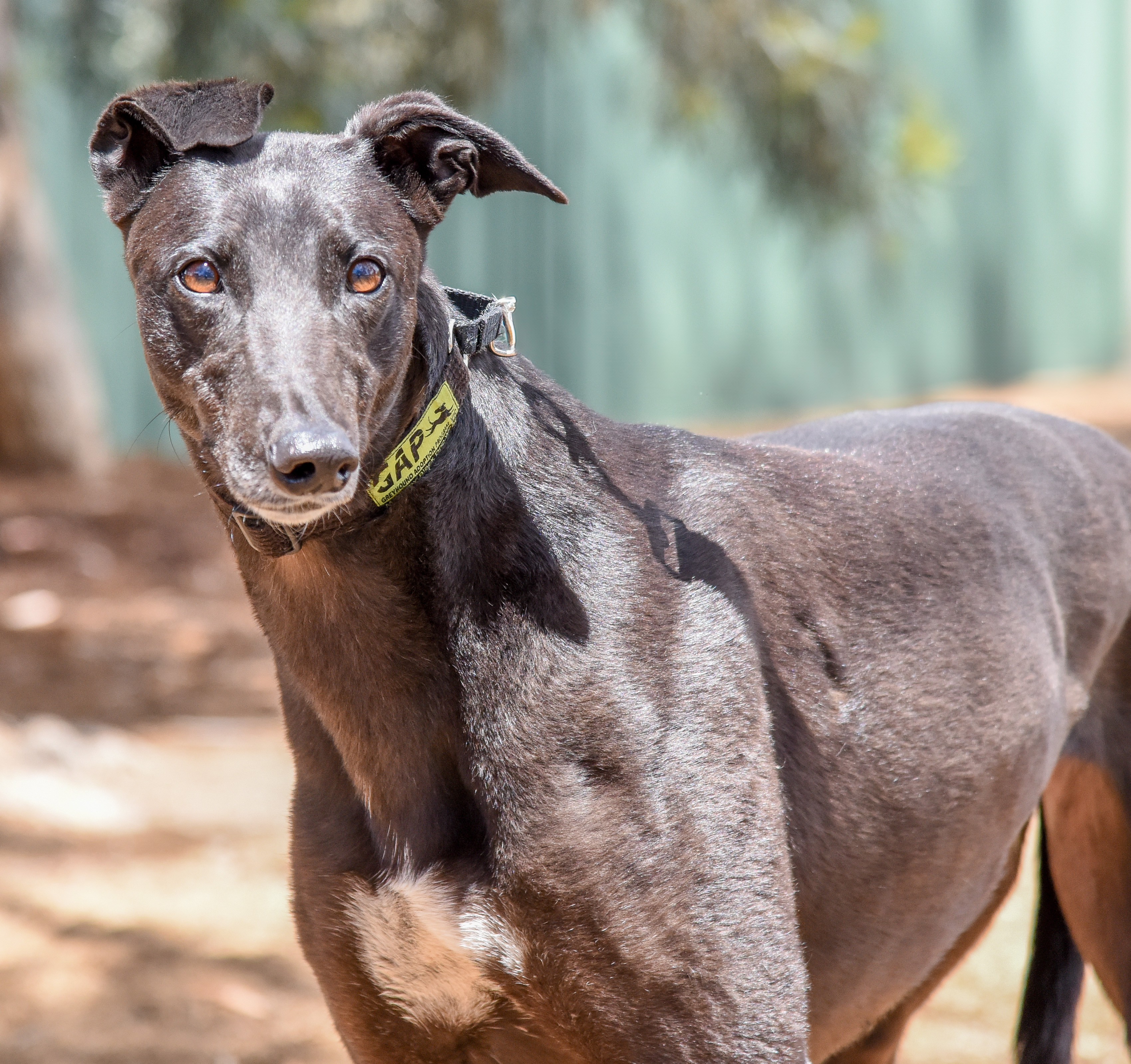
Reindeer ARP
She may not be leading Santa’s sleigh like Rudolf but this quiet achiever is still just as important! She is a shy girl that we think will come out of her shell in a home that understands she just needs time to learn how to be a pet and patience to go at her pace. A quieter home with children 15 and over that are respectful of her boundaries maybe ok and somewhere with a nice yard that she can go and relax in. She may also benefit from a male friend that is medium or larger to help her transition into pet life. This lovely dog is not suitable for a home with cats.
This dog is part of our Assisted Rehoming Program (ARP). We have behavioural and health assessed this lovely dog, and they will remain with their racing owners until they find an adoptive home, at which point they are brought back into GAP. This means that should you be interested in adopting this dog, we are bringing the dog into GAP on the understanding that you will be adopting this particular dog, and not other dogs currently in our care.
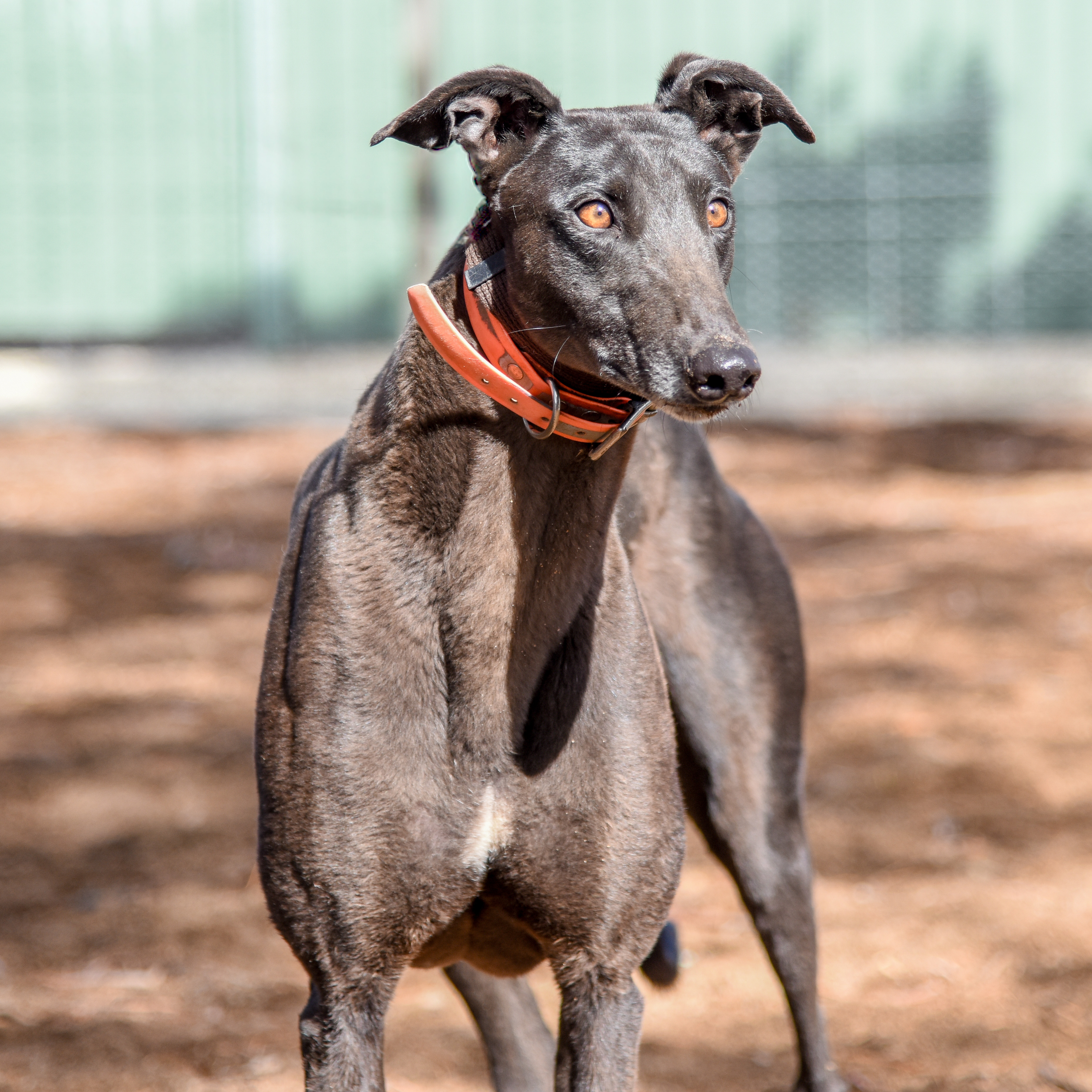
Britney ARP
Britney ARP is a super sweet little lady who can be a little shy when she first meets you but comes out of her shell quickly. She is super quiet and easy to be around and may suit living with children aged 10years and over. She may suit living in a home with or without another medium or large canine companion. This lovely dog is not suitable for a home with cats.
This dog is part of our Assisted Rehoming Program (ARP). We have behavioural and health assessed this lovely dog, and they will remain with their racing owners until they find an adoptive home, at which point they are brought back into GAP. This means that should you be interested in adopting this dog, we are bringing the dog into GAP on the understanding that you will be adopting this particular dog, and not other dogs currently in our care.
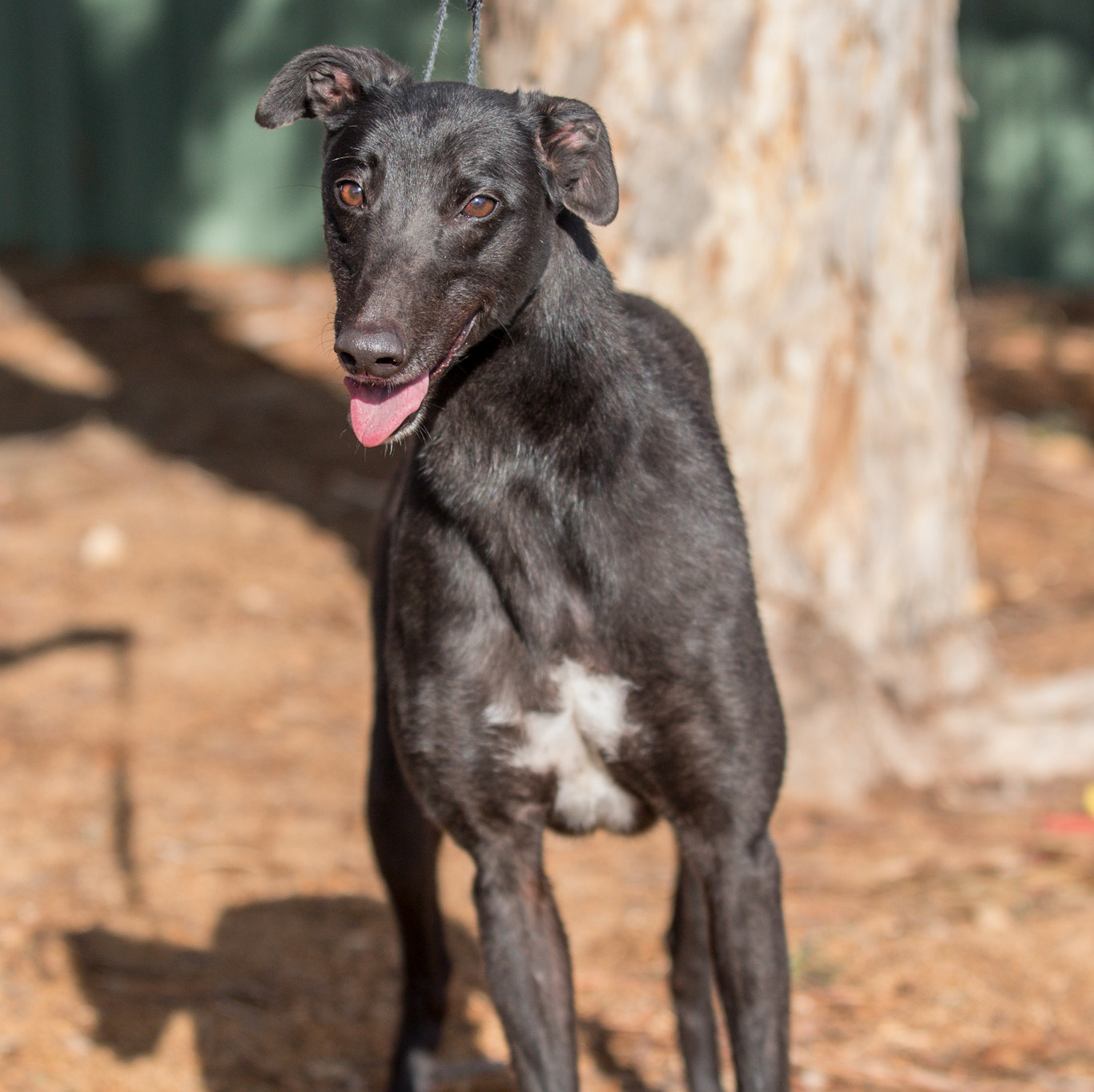
Jess

Owen
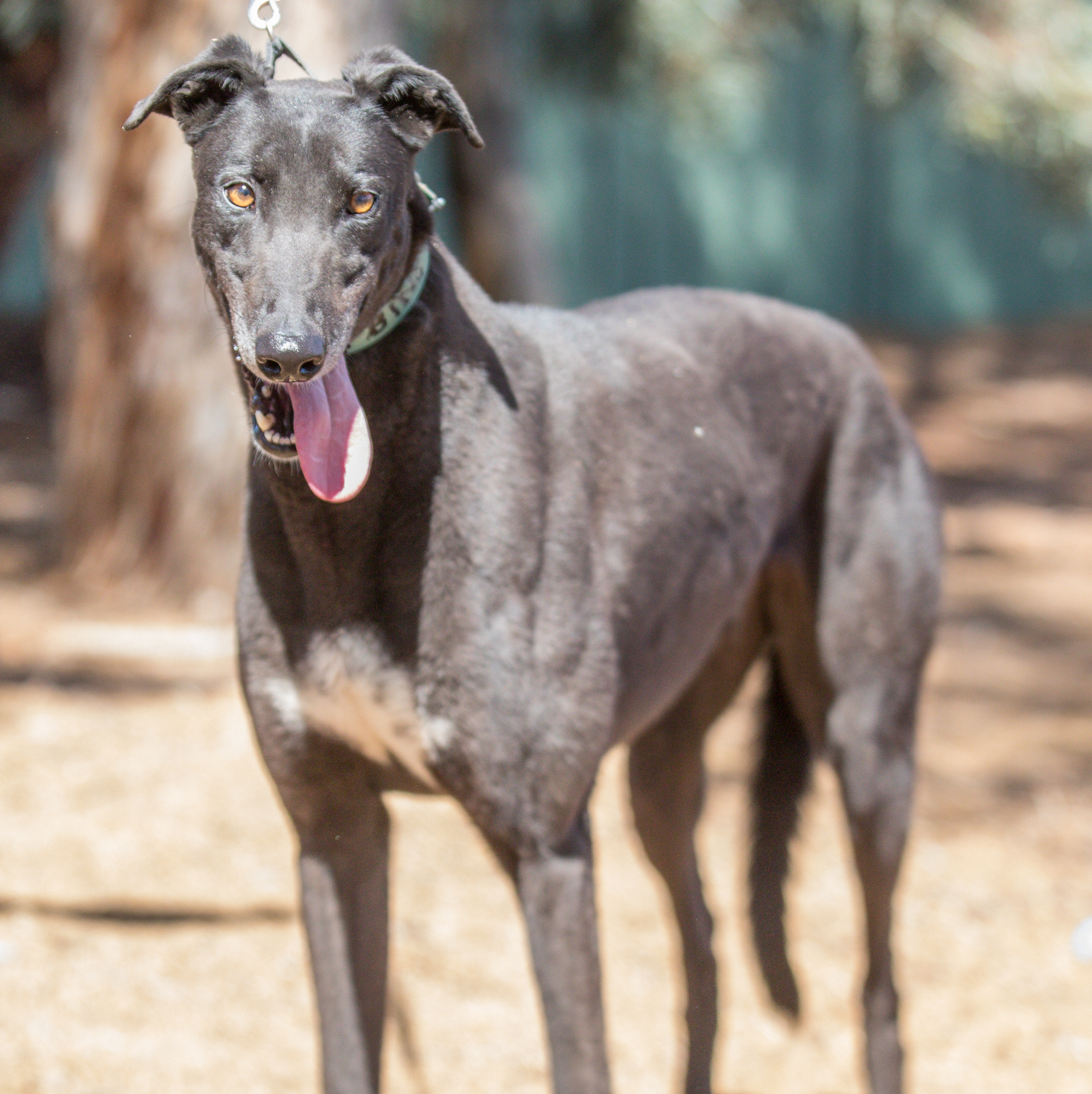
Bing ARP
Bing is a lovely friendly, personable boy who can have a soft side at times. He tries his hardest to please, but sometimes he can get a little overwhelmed. He would benefit from a family who can build his confidence up and show him that the world isn't such a scary place. He would prefer to live in a quiet home in a quiet neighbourhood. He may be happy to live with a calm, polite dog of any size, though he may also be happy living as an only dog. Bing may be happy living with children aged 10 years and over. This lovely dog is not suitable for a home with cats.
This dog is part of our Assisted Rehoming Program (ARP). We have behavioural and health assessed this lovely dog, and they will remain with their racing owners until they find an adoptive home, at which point they are brought back into GAP. This means that should you be interested in adopting this dog, we are bringing the dog into GAP on the understanding that you will be adopting this particular dog, and not other dogs currently in our care.







